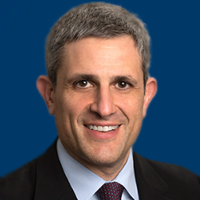Commentary
Video
Dr Narayan on the Mechanism of Action of Nadofaragene Firadenovec in NMIBC
Author(s):
Vikram Narayan, MD, discusses the mechanism of action of nadofaragene firadenovec in patients with high-risk non–muscle invasive bladder cancer.
Vikram Narayan, MD, director, Urological Oncology, Grady Memorial Hospital; assistant professor, Department of Urology, Emory University School of Medicine, Winship Cancer Institute, discusses the mechanism of action of nadofaragene firadenovec-vncg (Adstiladrin) in patients with high-risk BCG-unresponsive non–muscle invasive bladder cancer (NMIBC) with carcinoma in situ (CIS) with or without papillary tumors.
Nadofaragene firadenovec operates through a mechanism of action that involves a non-replicating adenovirus carrying interferon alfa-2b (IFNα-2b) and Syn3, Narayan begins. Historically, IFNα-2b has been administered intravesically either alone or in conjunction with BCG for bladder cancer management, albeit with limited effectiveness, according to Narayan. However, nadofaragene firadenovec introduces a novel treatment approach by using an adenoviral vector to deliver IFNα-2b directly into urothelial cells, he explains. By exploiting the innate abilities of urothelial cells, nadofaragene firadenovec creates a localized "bioreactor" within the bladder, continuously generating IFNα-2b protein and sustaining its therapeutic impact over time, Narayan states.
The inclusion of Syn3 in nadofaragene firadenovec serves an important role in enhancing the agent’s efficacy and facilitating better penetration and uptake of the therapeutic components, overcoming a historical barrier that hindered the effectiveness of interferon therapy when administered alone, he expands. This synergy between the adenoviral vector and Syn3 underscores the multifaceted approach of nadofaragene firadenovec in combating bladder cancer, Narayan elucidates.
The pleiotropic effects of IFNα-2b further contribute to the efficacy of nadofaragene firadenovec by eliciting a range of immunostimulatory and immunomodulatory responses, he reports. These effects include apoptosis, inhibition of angiogenesis, and augmentation of natural killer cell activity against bladder cancer cells, Narayan says. The culmination of these responses leads to widespread tumor cell death and underpins the promising complete response (CR) rates observed in a phase 3 study of nadofaragene firadenovec, Narayan adds.
Despite the notable CR rates achieved with nadofaragene firadenovec, ongoing research efforts aim to refine and optimize its therapeutic outcomes, he continues. Enhancements may involve exploring combination therapies to augment its effects or potentially readministering the treatment to bolster long-term CR rates, Narayan says. Although the current results with this agent are promising, continued research and innovation are essential to further elucidate the full potential of nadofaragene firadenovec in the management of bladder cancer, he concludes.









